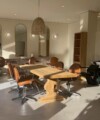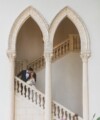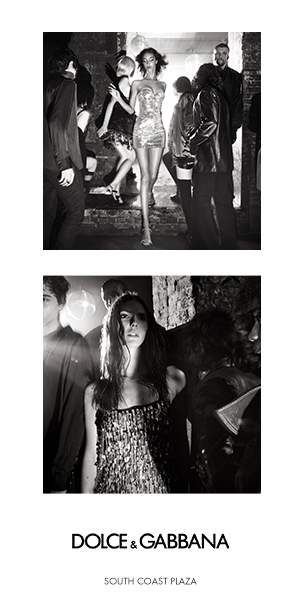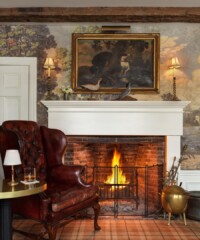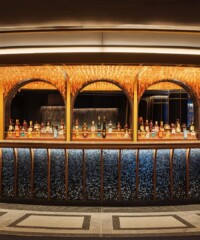Economic collapse, natural disasters and terror attacks are only a few of the concerns currently on the minds of America’s top earners. And while the idea of someone prepping for Doomsday may conjure the image of a conspiracy theorist with a shed full of canned goods, a frightening global climate has made it so that even members of the one percent are getting serious about planning for a disaster.From underground missile silos converted into full-service condos to custom homes with panic rooms designed to trap an intruder, options for an upscale end-of-days scenario are as diverse as the range of potential catastrophes fueling their purchase.
“If you have the money and the means to protect your family, who wouldn’t?” asks Tyler Allen, a Florida-based developer who is in negotiations to purchase a multimillion-dollar unit in an underground condominium complex that boasts a movie theater and a full-scale gym. “Going to this facility would be like waiting out the apocalypse in a five-star hotel,” he says.
Developer Larry Hall uses the term “life assurance” to refer to his Kansas compound, built in a former Atlas missile silo, where units—including the one Allen is purchasing—start at more than $1 million and where common luxury-building perks are supplemented with extras like five years’ worth of food.
Despite the serious nature of these domiciles, Hall, who has worked for defense contractors, talks about the units as blithely as one might a new pied-à-terre. “We decided to make them ultra modern, with all of the problems sought out and solved,” he says. “It was a turnkey solution of a high-end property people could use as a getaway. And it doubles as a survival shelter.”
To date, Hall has sold 13 units in his first facility and is taking orders for a second, third and fourth, now in development. The first building is ready for occupation, with security and maintenance staff already hired and trained. Medical services are on more of a cooperative basis: Doctors, nurses and dentists who own units have agreed to provide care for their neighbors.
Meanwhile, some among the concerned and comfortable have opted to build protection into their primary homes. Hardened Structures, a Virginia-based firm, builds custom homes complete with reinforced walls and built-in shelters. Working for clients including celebrities, athletes and CEOs, the company creates what look like typical mansions but possess ballistic-resistant exteriors, panic rooms and secret passageways leading to underground shelters, with walls designed to withstand blast pressure. They’re also equipped for off-the-grid living: no water, no power, no problem.
The homes’ overriding feature is discretion. Principal Brian Camden, currently at work on houses in New York, California and Texas, explains that because their assets are so well couched, Hardened Homes have an advantage over their rivals. “When we interview the clients to find out what they want, we tell them, don’t tell anybody,” he says. “It’s all need-to-know from that point on. Operational security is incredibly important to these people.”
Emotional wellbeing is another factor to consider, given that a long-term stay in a confined space can incite anxiety and depression. Many shelters feature exercise equipment and wall art that mimics windows.
Despite the amenities, there’s a challenge inherent in marketing something people hope never to use. Some developers have worked around that by packaging the shelters as year-round resorts that just happen to have the added benefit of being able to protect against disaster.
The idea that these homes can save lives is critical to buyers, no matter the cost. For those with the funds, it’s another way of providing for the ones they love. “If someone considers family his most important asset, these homes are asset protection,” Camden says. “It’s that simple.”
ROUGHING IT
For survivalists without million-dollar bunkers, all is not lost. Survival Academy, an immersive training experience launched by former Man vs. Wild star Bear Grylls, offers programs that typically accommodate 10–12 participants and range from 24 hours to five days in locations like Yosemite National Park, the Scottish Highlands and Victoria Falls, Zimbabwe. Here are the skills participants can expect to learn:
1. Shelter
Build an A-frame shelter that houses up to four people by cross-hatching sticks and using ferns to waterproof and insulate.
2. Food
Explore outdoor delicacies like protein-packed mealworms and grubs, then set a spring-loaded trap to catch a rabbit—which you’ll skin, gut and roast over a fire.
3. Water
Identify fresh water by seeking out a clear, fast-moving stream, or sterilize impure water using a sock, charcoal, grass and sand or iodine tablets.
4. Fire
No flint? No problem. Learn to start a fire using a battery and steel wool.
5. Traverse
After mastering how to tie a bowline and slipknot, you’ll be able to rappel down steep inclines, zip-line and cross a river gorge.
Prices vary based on course location and length. For more information, go to BearGrylls-SurvivalAcademy.com.
—Lindsay Silberman









